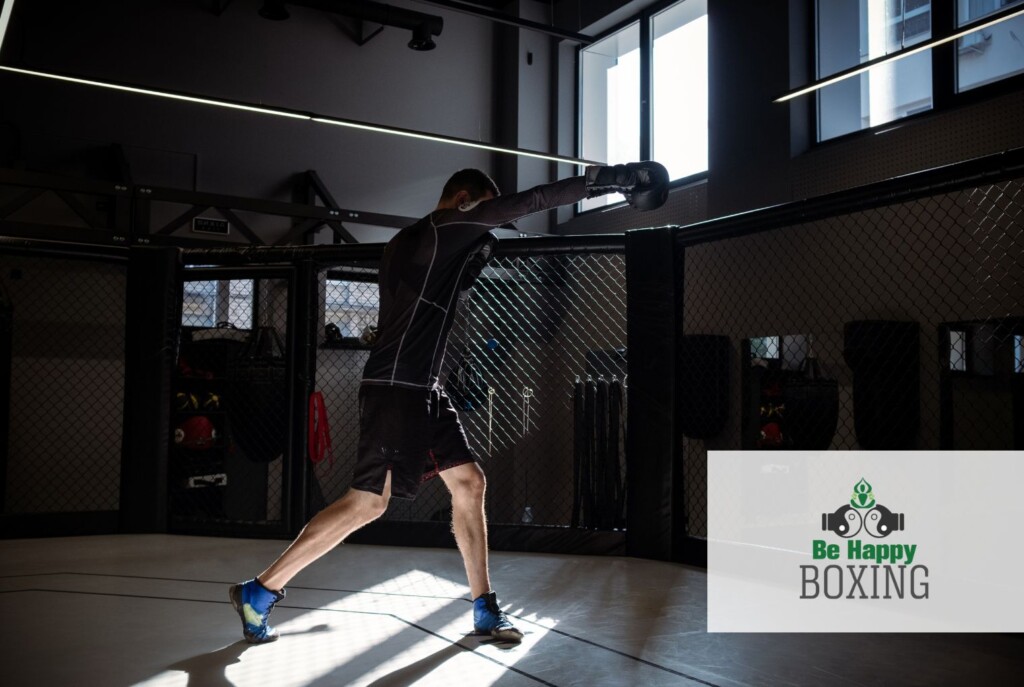Shadow boxing is a fundamental training technique used by fighters, fitness enthusiasts, and anyone looking to improve their movement, coordination, and overall conditioning. Whether you’re a beginner learning how to shadow box or an experienced athlete refining your skills, this guide will help you maximize your boxing training.
Key Takeaways
- Shadow boxing is a versatile training tool – It enhances technique, coordination, and endurance, making it an essential exercise for fighters and fitness enthusiasts alike.
- Incorporating defense and visualization is crucial – Effective shadow boxing isn’t just about throwing punches; integrating head movement and imagining an opponent improves reaction time and fight readiness.
- Consistency and variety maximize benefits – To get the most out of shadow boxing, mix different punch combinations, footwork, and defensive techniques while maintaining proper form and breathing control.
What Is Shadow Boxing?
Shadowboxing is a solo training exercise where you throw punches in the air without a physical opponent or punching bag. It allows you to practice your footwork, head movement, and striking combinations while enhancing your overall technique.
Benefits of Shadow Boxing
1. Improves Technique and Form
Shadowboxing enables you to refine your punches, footwork, and defensive movements. By practicing in front of a mirror or recording yourself, you can correct any flaws in your form.
2. Enhances Speed and Coordination
Without the resistance of a bag or opponent, shadow boxing lets you focus on the speed and precision of your movements. This helps develop muscle memory and improves coordination.
3. Boosts Cardio and Endurance
Since shadow boxing is a high-intensity, full-body workout, it significantly improves cardiovascular health and stamina. Fighters often use it as a warm-up or cool-down exercise.
4. Does Shadow Boxing Build Muscle?
While shadowboxing is primarily a cardiovascular and skill-based workout, it can contribute to muscle endurance and tone. The repeated movements engage muscles in the shoulders, arms, core, and legs, helping to define them over time. However, if your goal is significant muscle growth, incorporating resistance training alongside shadow boxing is recommended.

How to Shadow Box Effectively
1. Warm Up Properly
Before you start, ensure that your muscles are warmed up. Dynamic stretching, jumping rope, or light jogging can prepare your body for an effective session.
2. Focus on Proper Stance and Footwork
A strong foundation is key to effective shadow boxing. Keep your feet shoulder-width apart, slightly bend your knees, and maintain light movement to stay agile.
3. Throw Realistic Combinations
Mix up jabs, crosses, hooks, and uppercuts to mimic real fight scenarios. Visualize an opponent and react as if you’re dodging and countering attacks.
4. Use Head Movement and Defense
Shadow boxing isn’t just about offense; incorporate slips, rolls, and parries to enhance your defensive skills. This helps build reflexes and anticipation in actual fights.
5. Control Your Breathing
Proper breathing is crucial in boxing. Exhale sharply with each punch to maintain energy and power throughout your workout.
6. Incorporate Intervals for Intensity
To maximize your training, include high-intensity intervals. For example, alternate between 30 seconds of explosive punches and 30 seconds of lighter movement.
Sample Shadow Boxing Routine
Round 1 (3 minutes):
- Warm-up with light footwork and basic jabs
- Focus on maintaining a strong stance and movement
Round 2 (3 minutes):
- Incorporate punch combinations (jab-cross, hook-uppercut, etc.)
- Add defensive movements like slips and rolls
Round 3 (3 minutes):
- Increase speed and intensity
- Work on counterpunching and reaction drills
Round 4 (3 minutes, optional):
- Simulate an actual fight scenario with offense and defense
- Maintain proper form while pushing endurance
Final Thoughts
Shadow boxing is an essential part of any fighter’s training regimen and a fantastic workout for anyone looking to improve their agility, coordination, and endurance. While it may not be the best method for building significant muscle mass, it undoubtedly strengthens key muscle groups and enhances overall fitness.
By following the proper techniques and incorporating structured training sessions, you can take full advantage of the benefits that shadow boxing has to offer.
Start shadow boxing today and experience the transformation in your skill, fitness, and confidence!
Frequently Asked Questions
How often should I practice shadow boxing?
Ideally, shadow boxing should be practiced 3-5 times per week, either as a warm-up, cooldown, or standalone workout. Frequency depends on your fitness level and training goals.
Can shadow boxing help with weight loss?
Yes! Since shadow boxing is a high-intensity, full-body workout, it burns calories effectively and can aid in weight loss when combined with a balanced diet and regular exercise.
Do I need any equipment for shadow boxing?
No equipment is necessary, but using wrist weights or light dumbbells can add resistance and further improve endurance and strength. A mirror can also help in refining technique.





